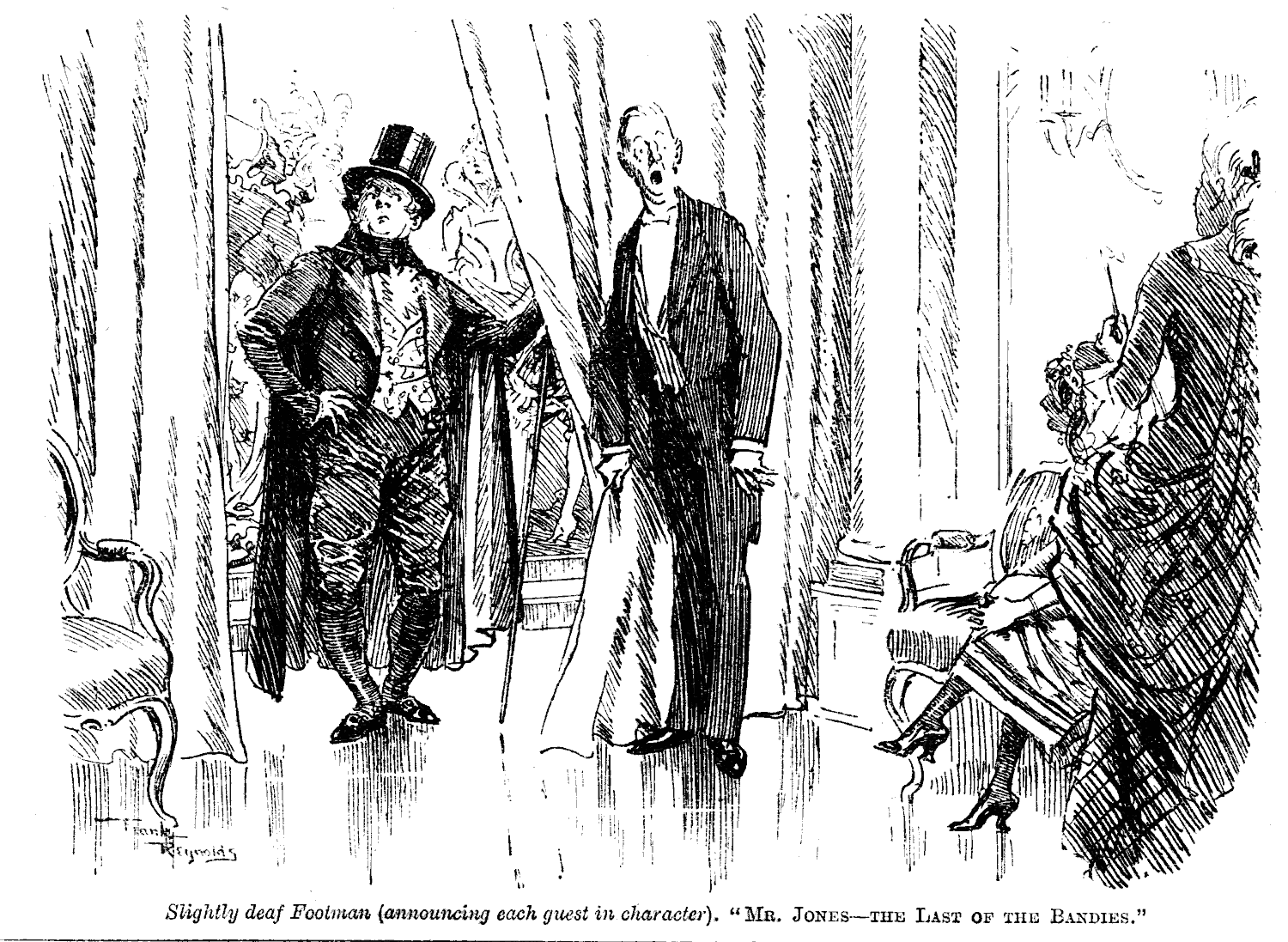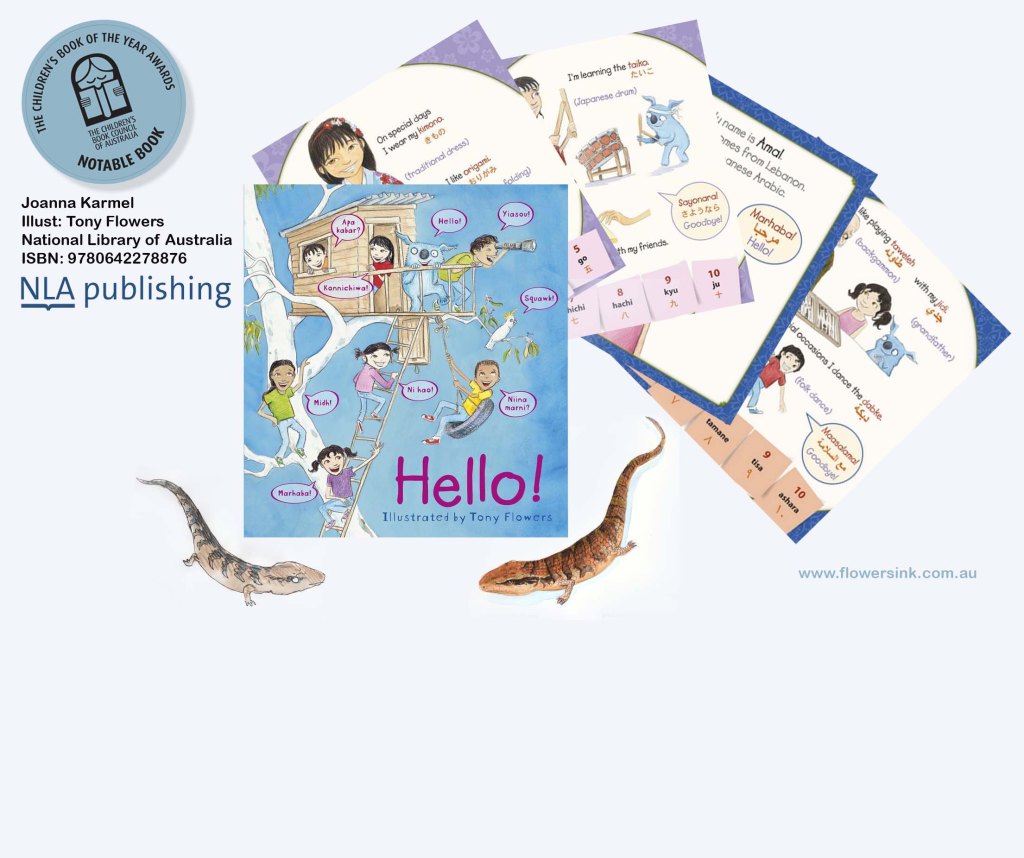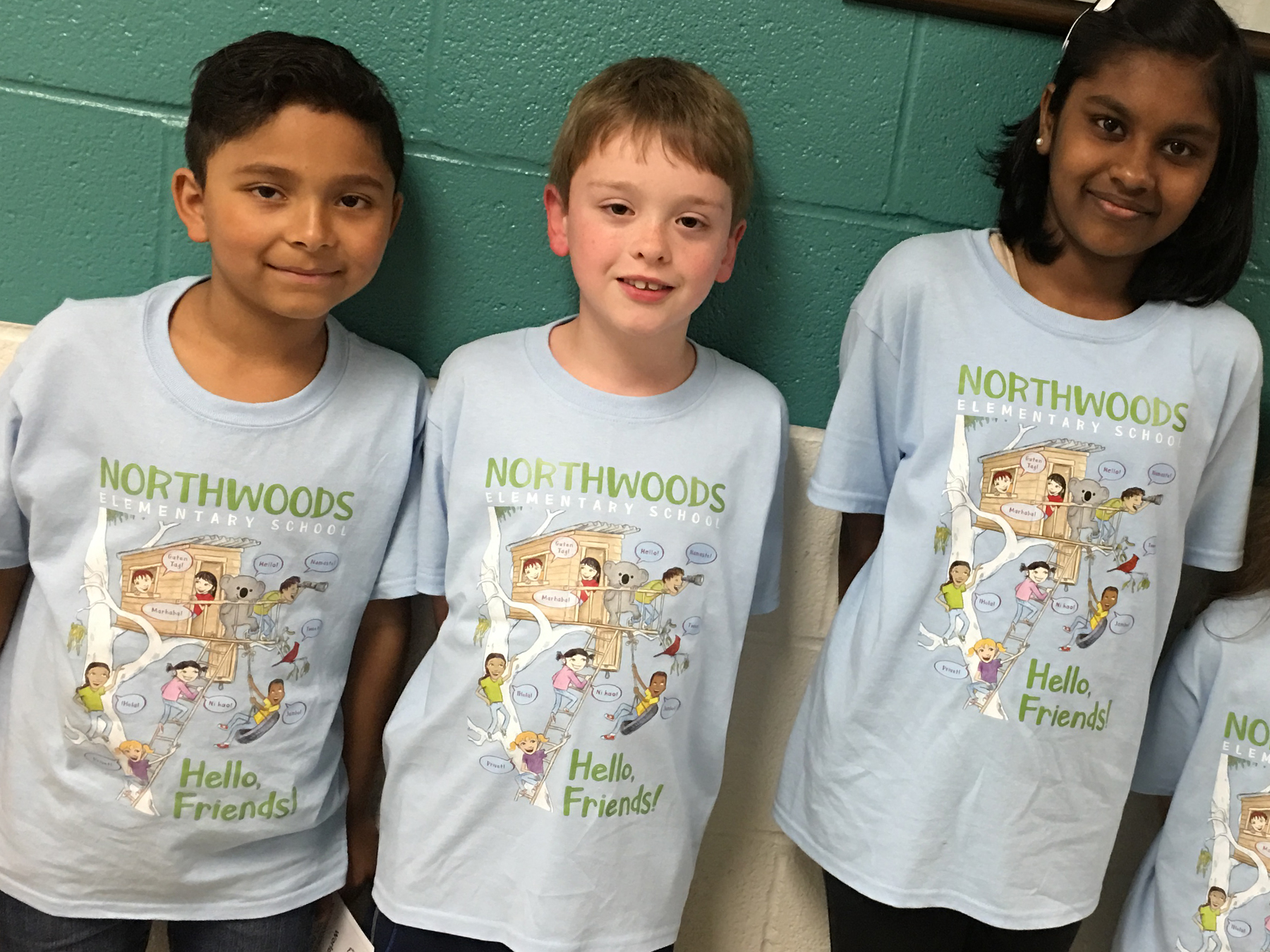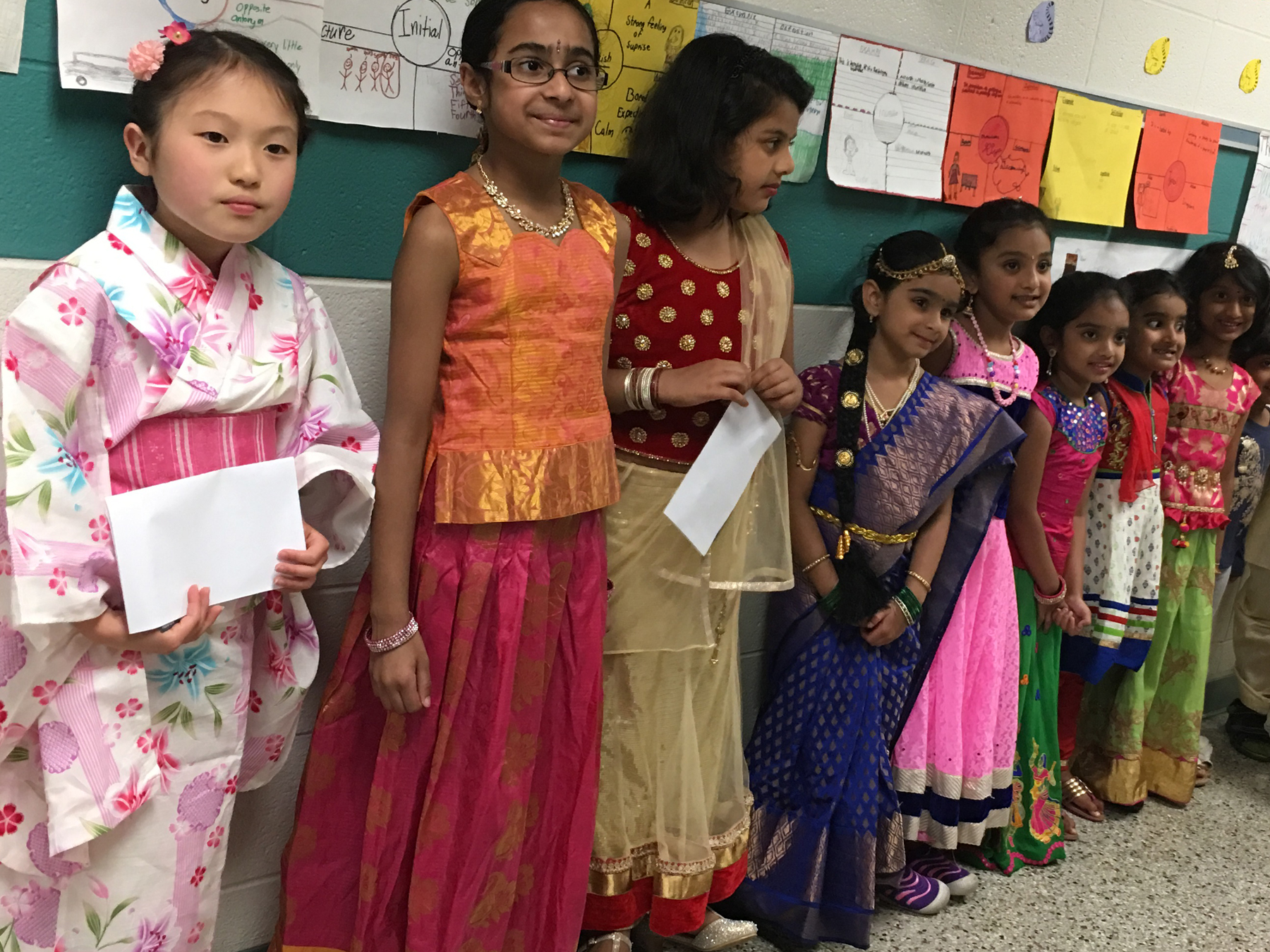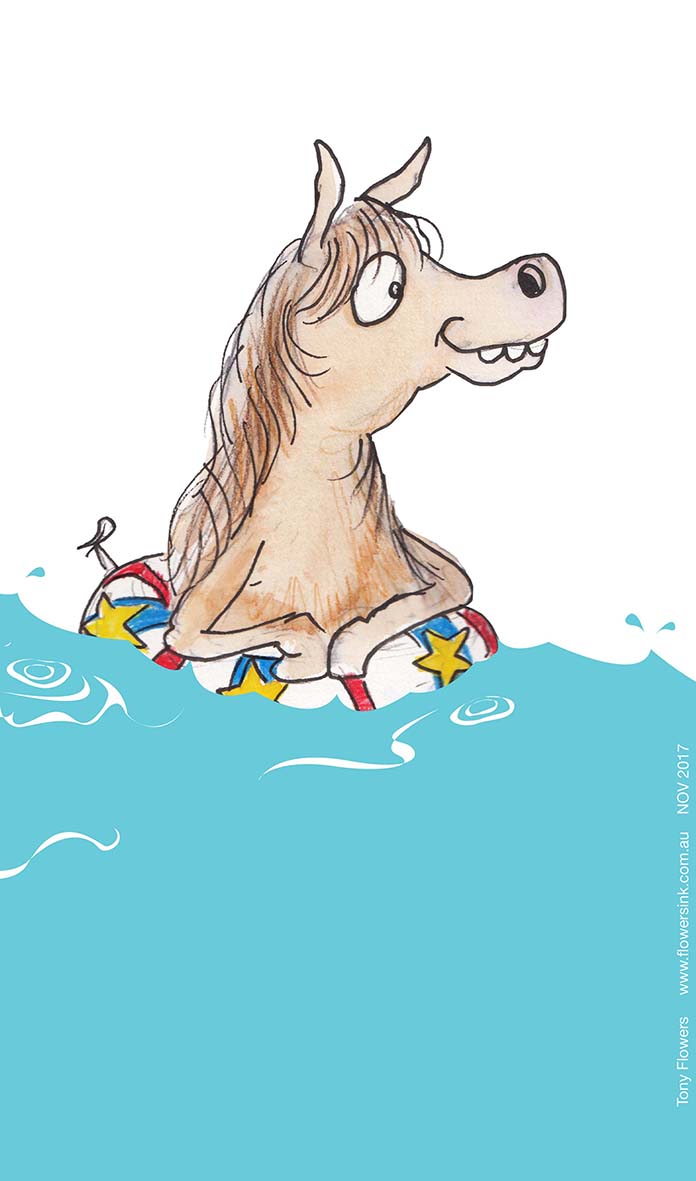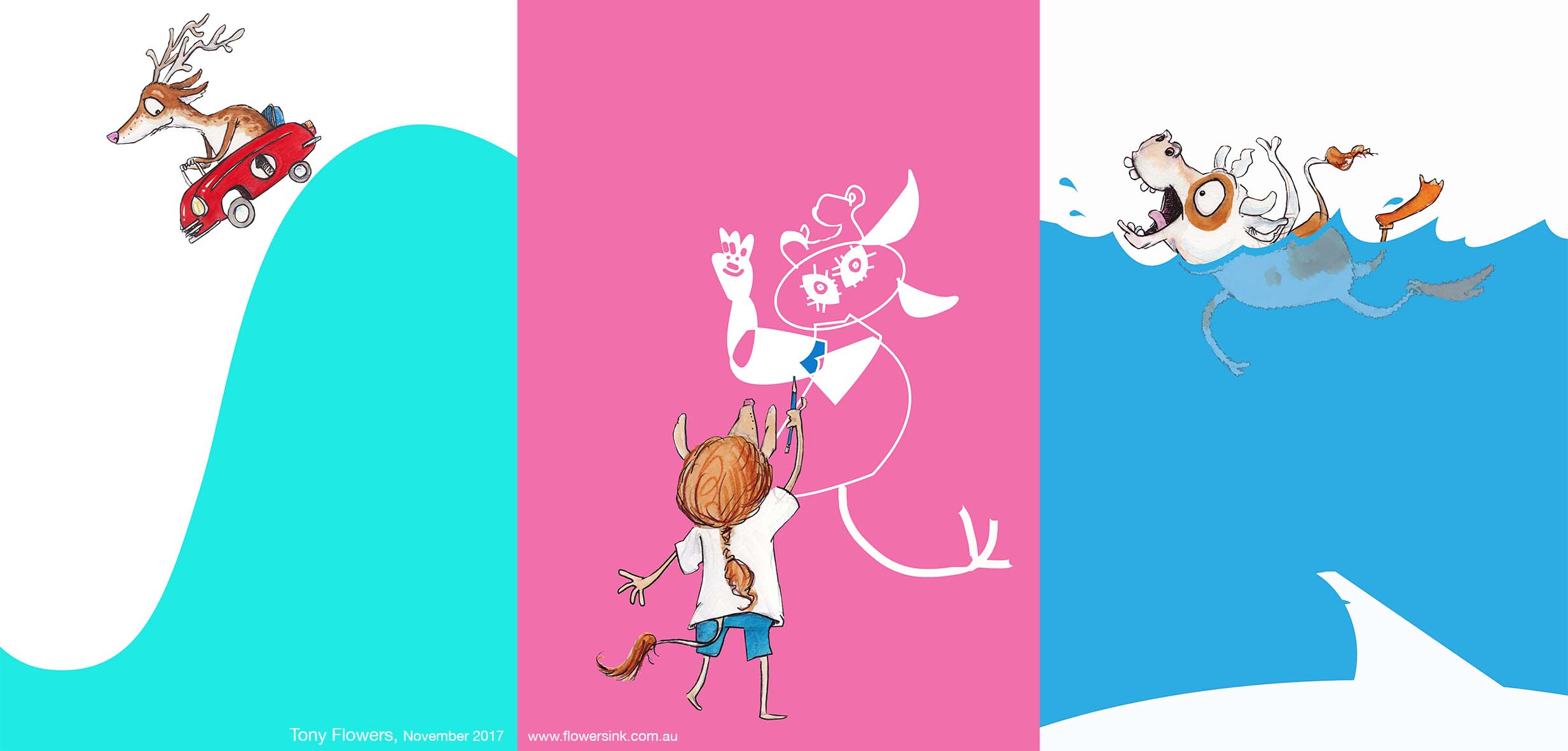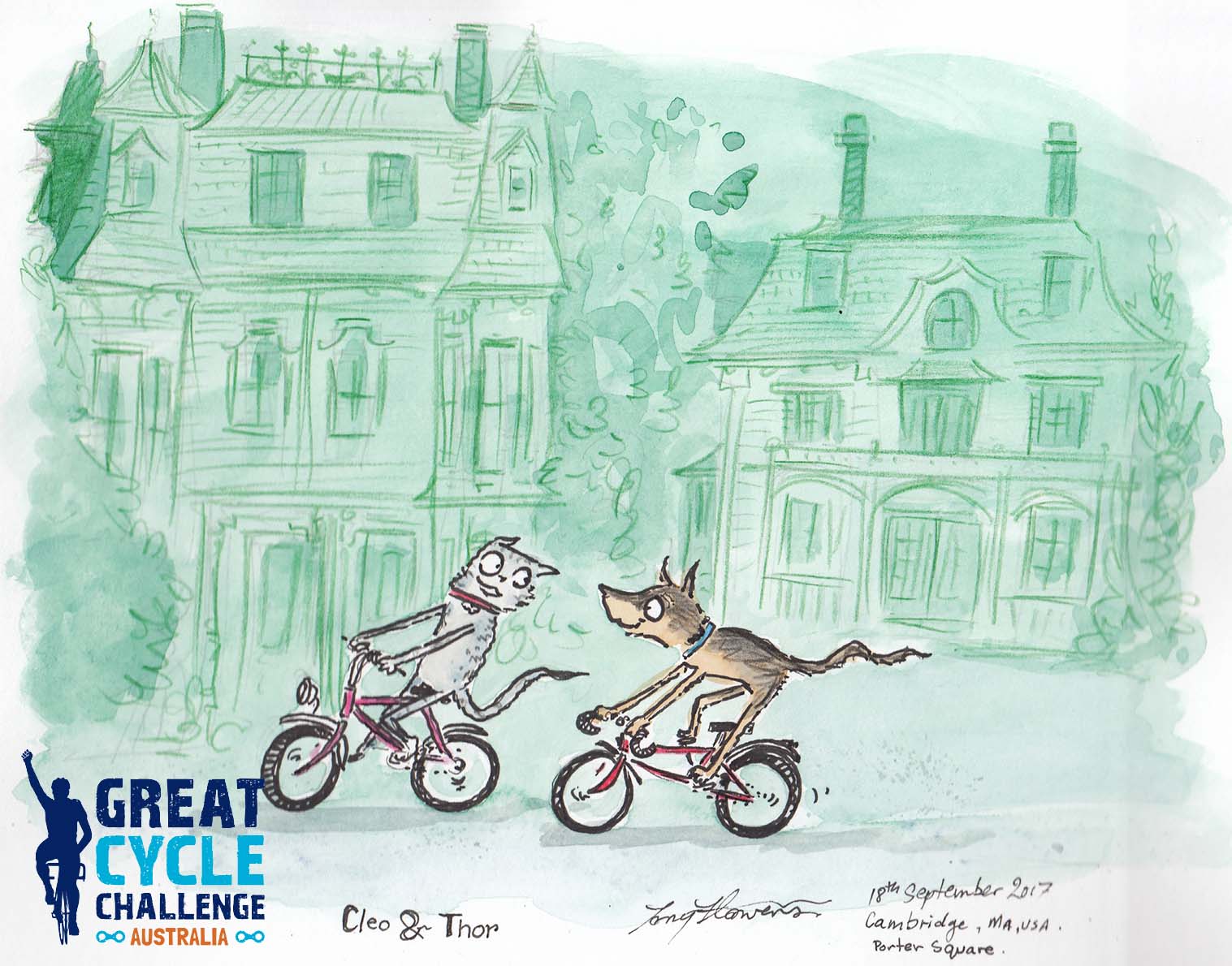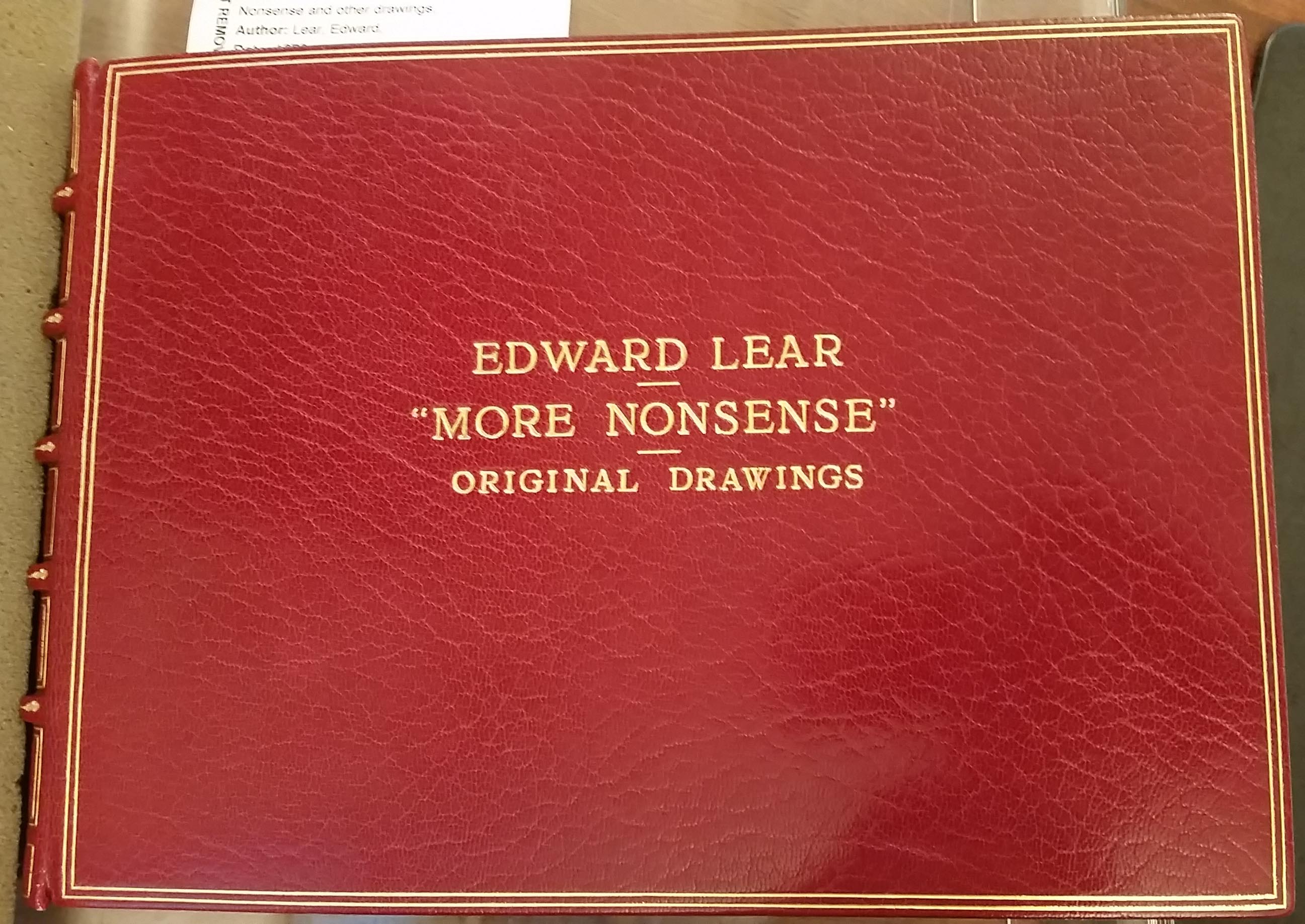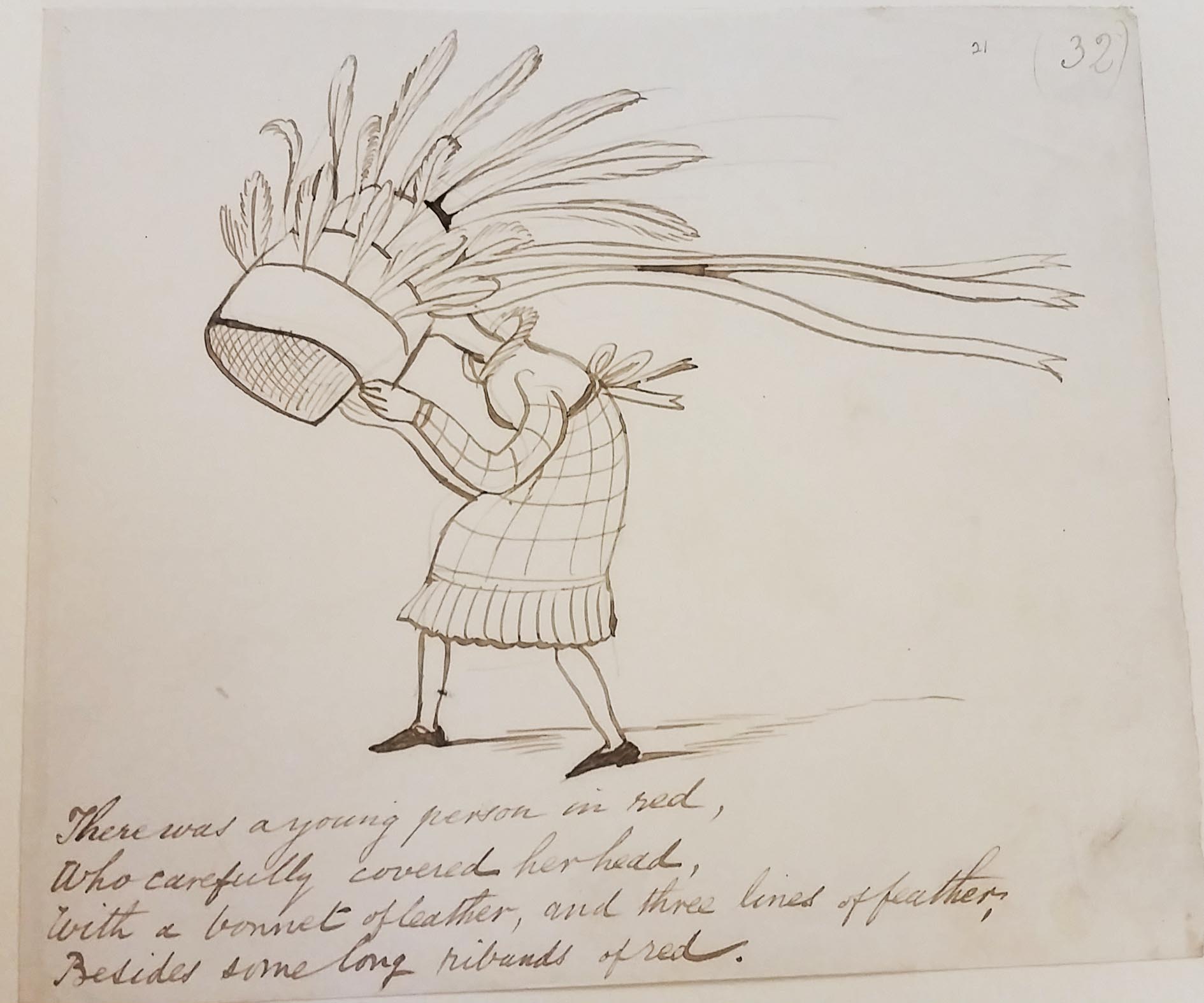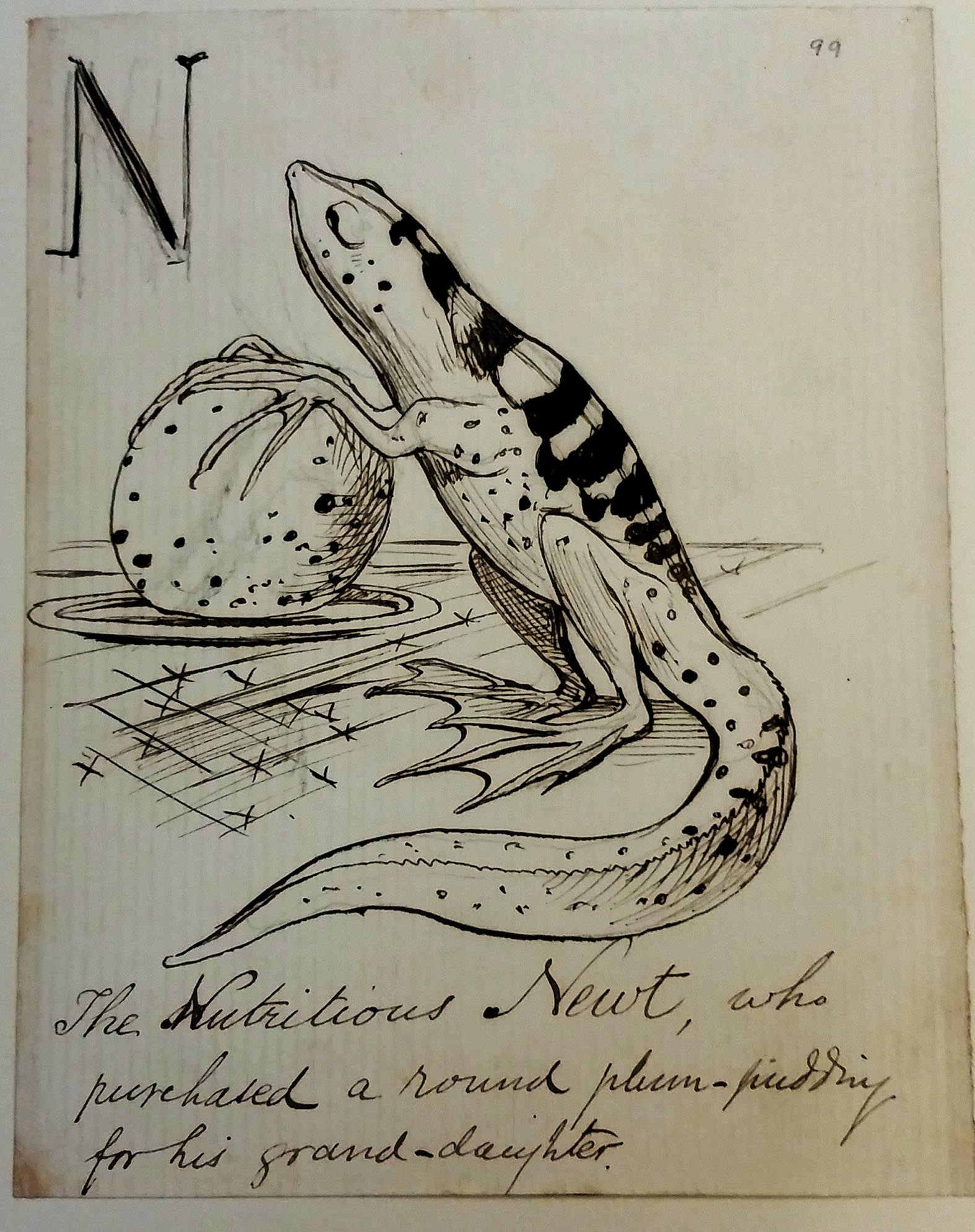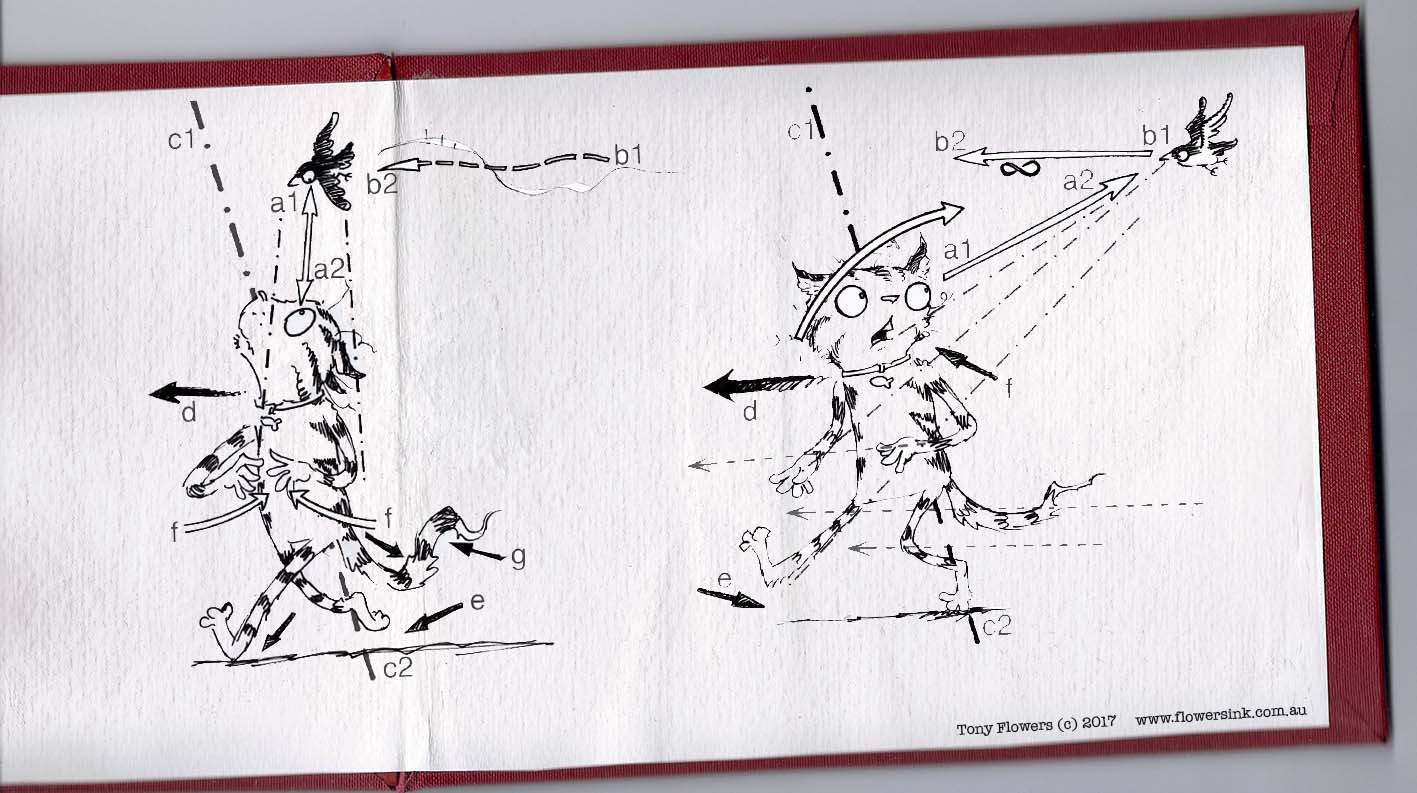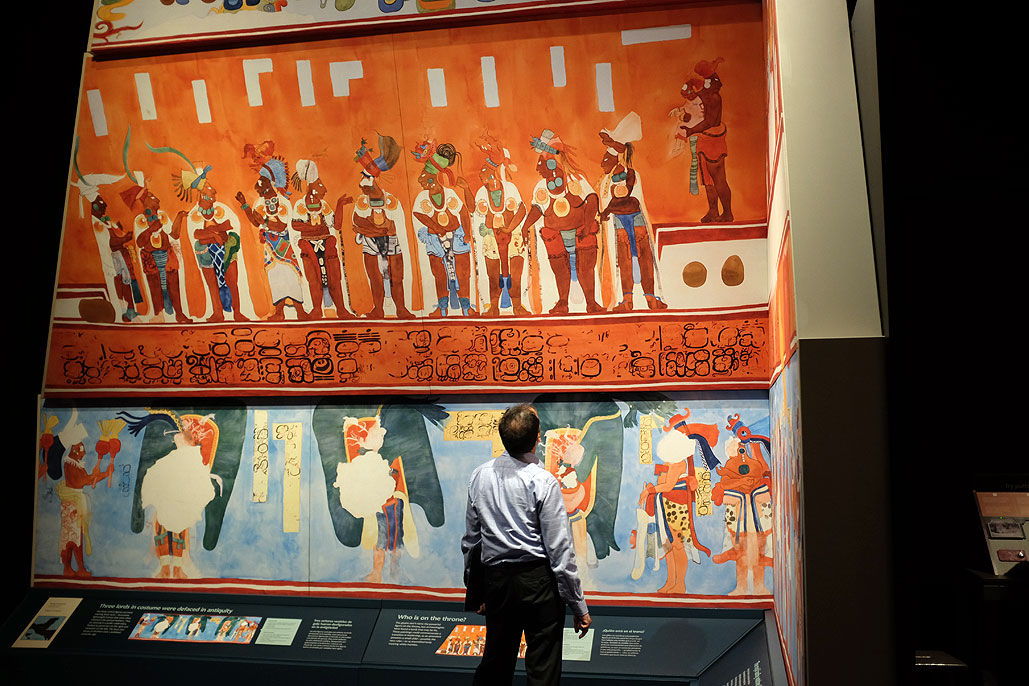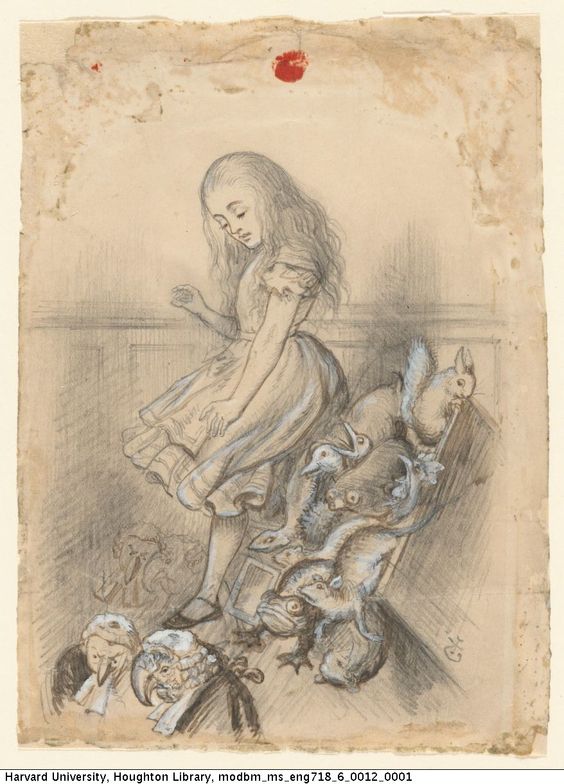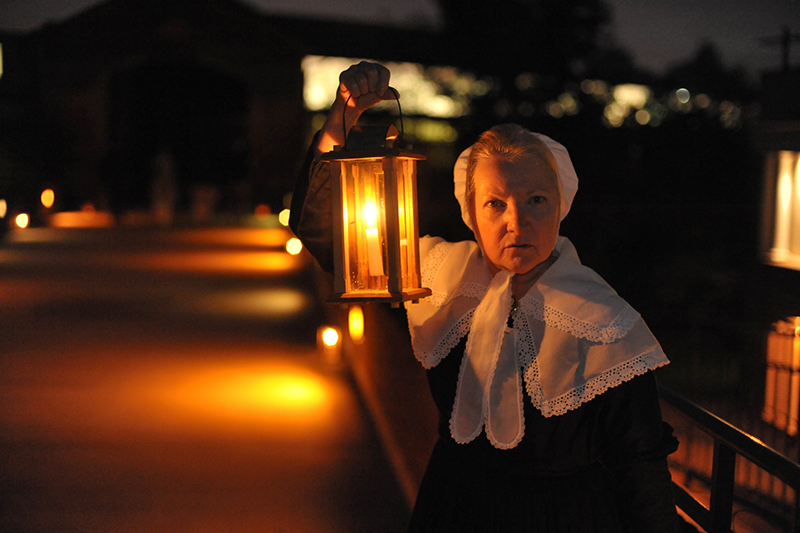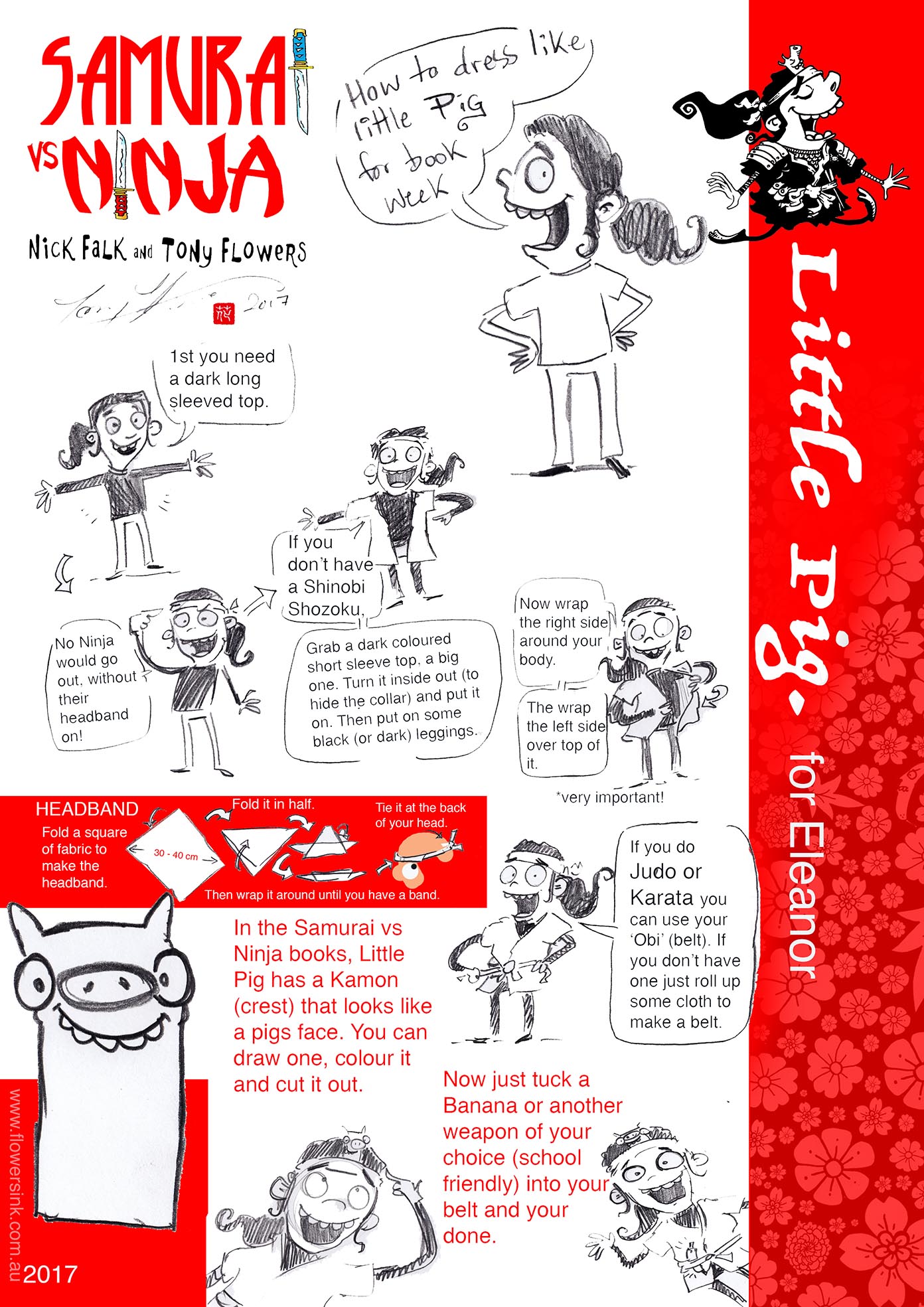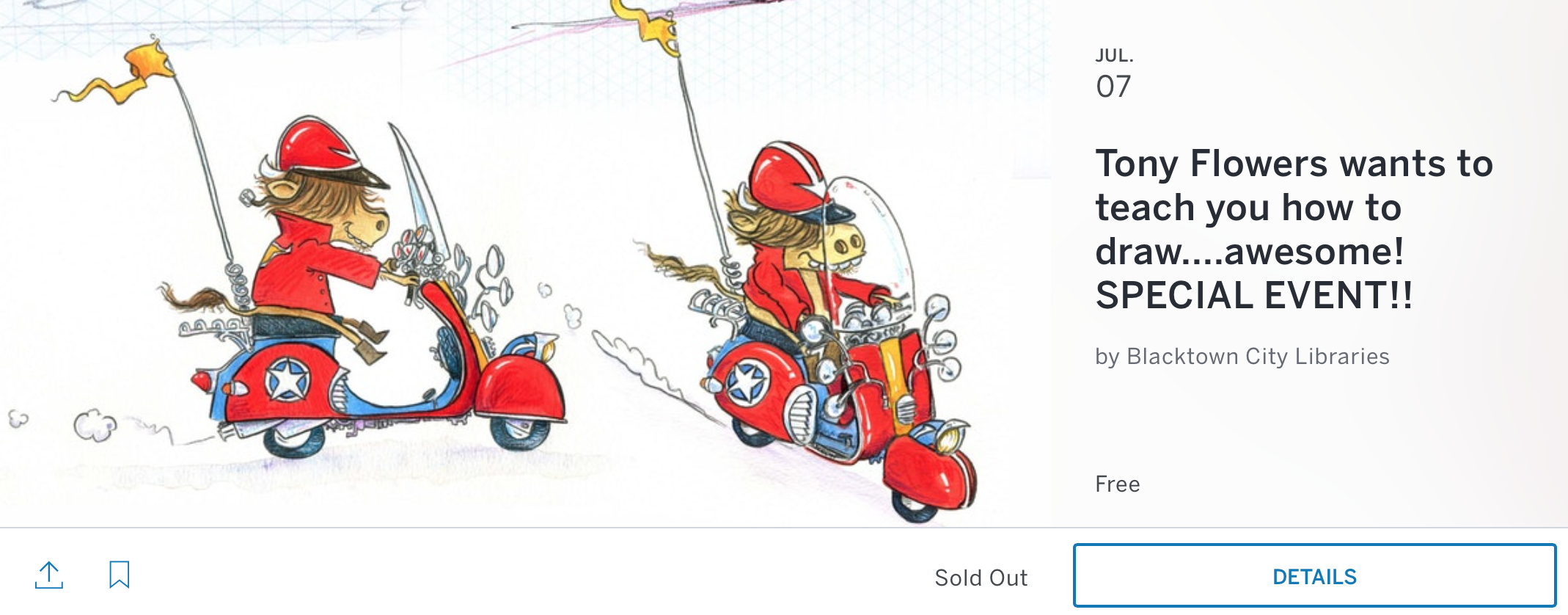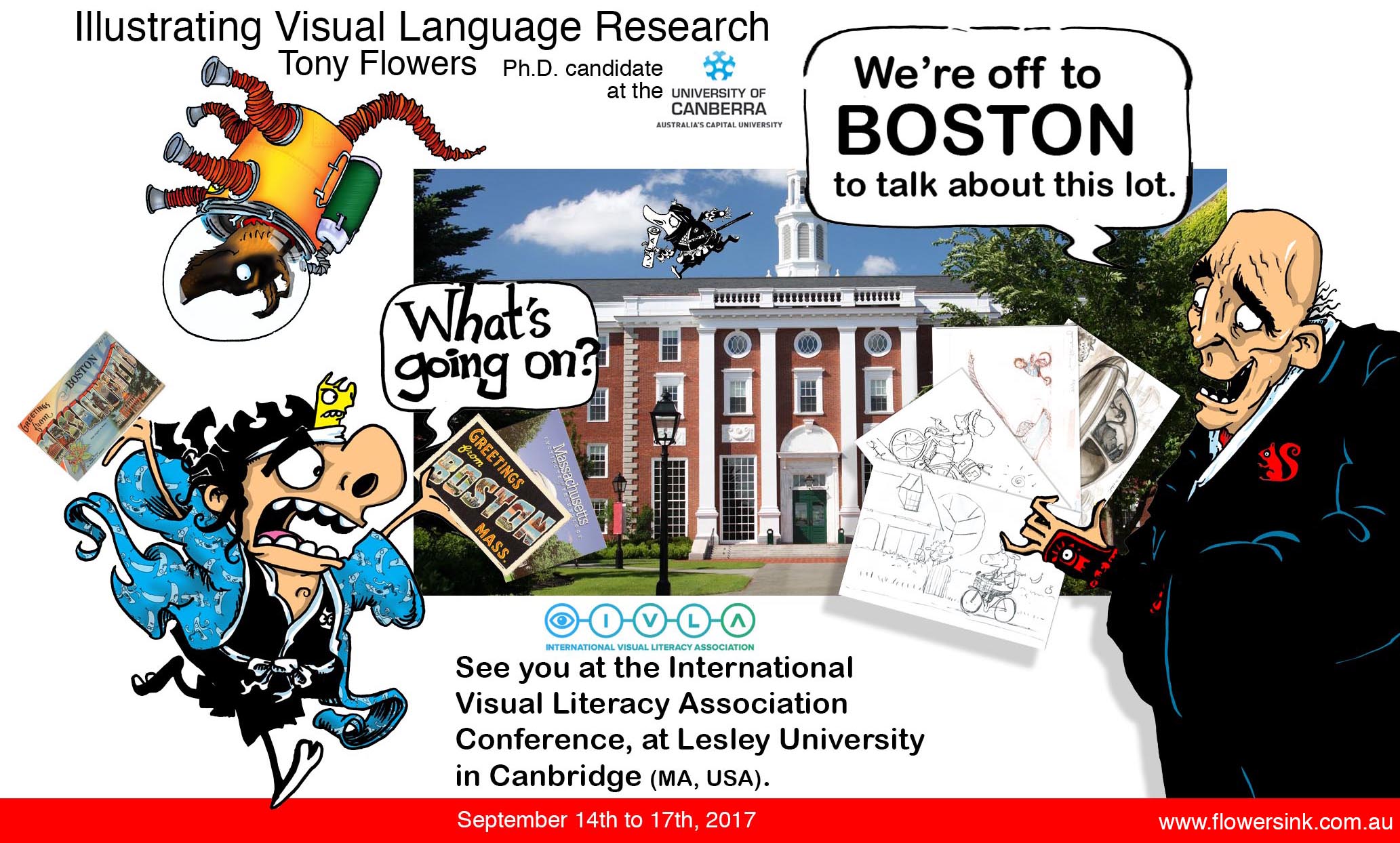I thought that I might post some images from my current sketchbook. Some of these have been posted on Facebook in the past, but not as a collection with an explanation (albeit a rambling one). I have shown my sketchbook to a number of people, all of whom focus in on these images. This may be as they are a little different to my normal illustration style.
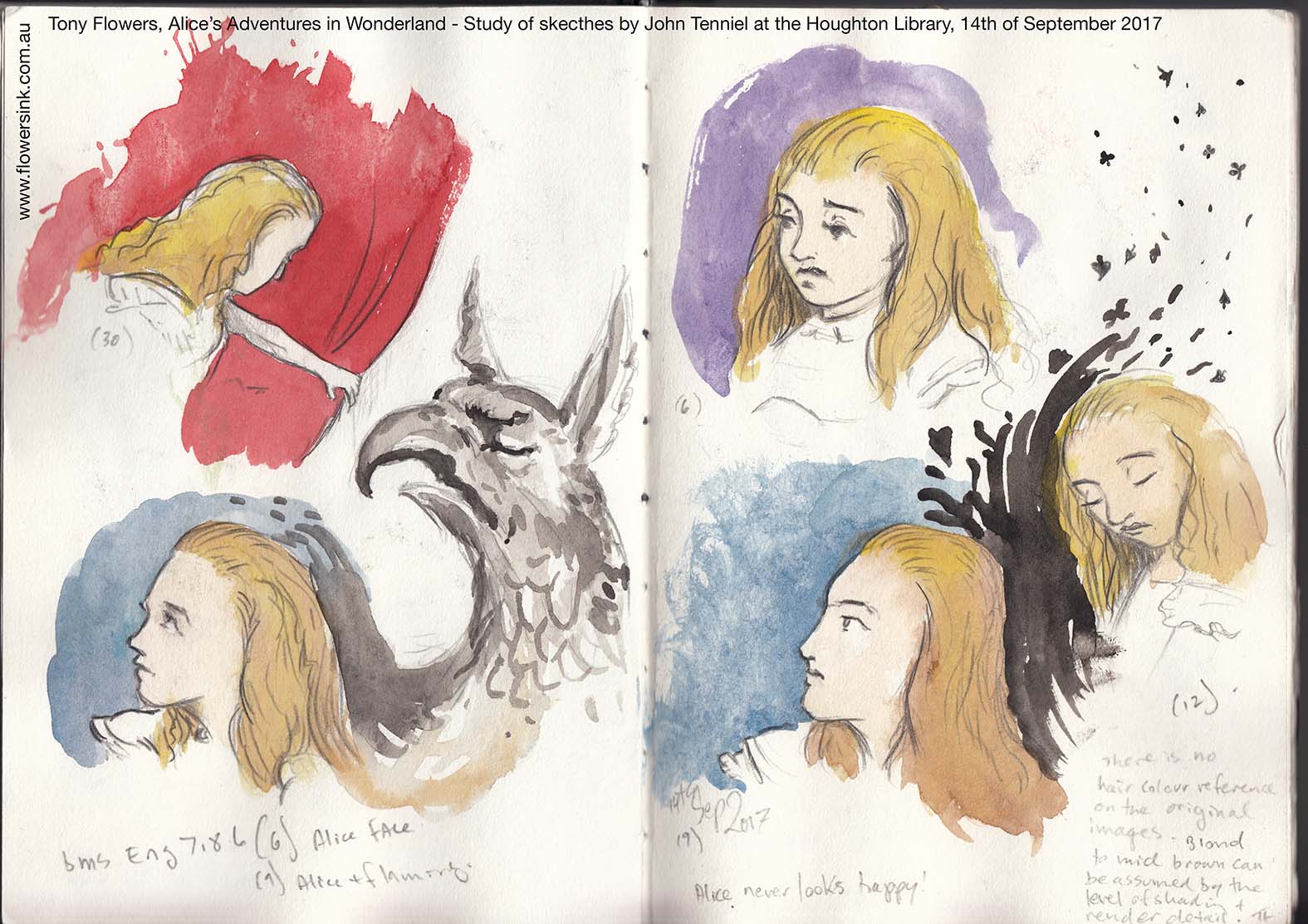
After my recent travels where I was able to visit the Harvard University’s rare books and manuscript collection at Houghton Library (see my older posts from September), I have been exploring the styles of Edward Lear and John Tenniel. This has been done initially through examining the original sketches of both artists and reproducing their line work, enabling me to get a feel for how each of them approached their drawings.
Tenniel for instance, has a very structured approach to his images, describing the form and volume through the use of cross hatch that will be later translated into the final printed image. Tenniel is best known for his illustrations for Alice’s Adventures in Wonderland.
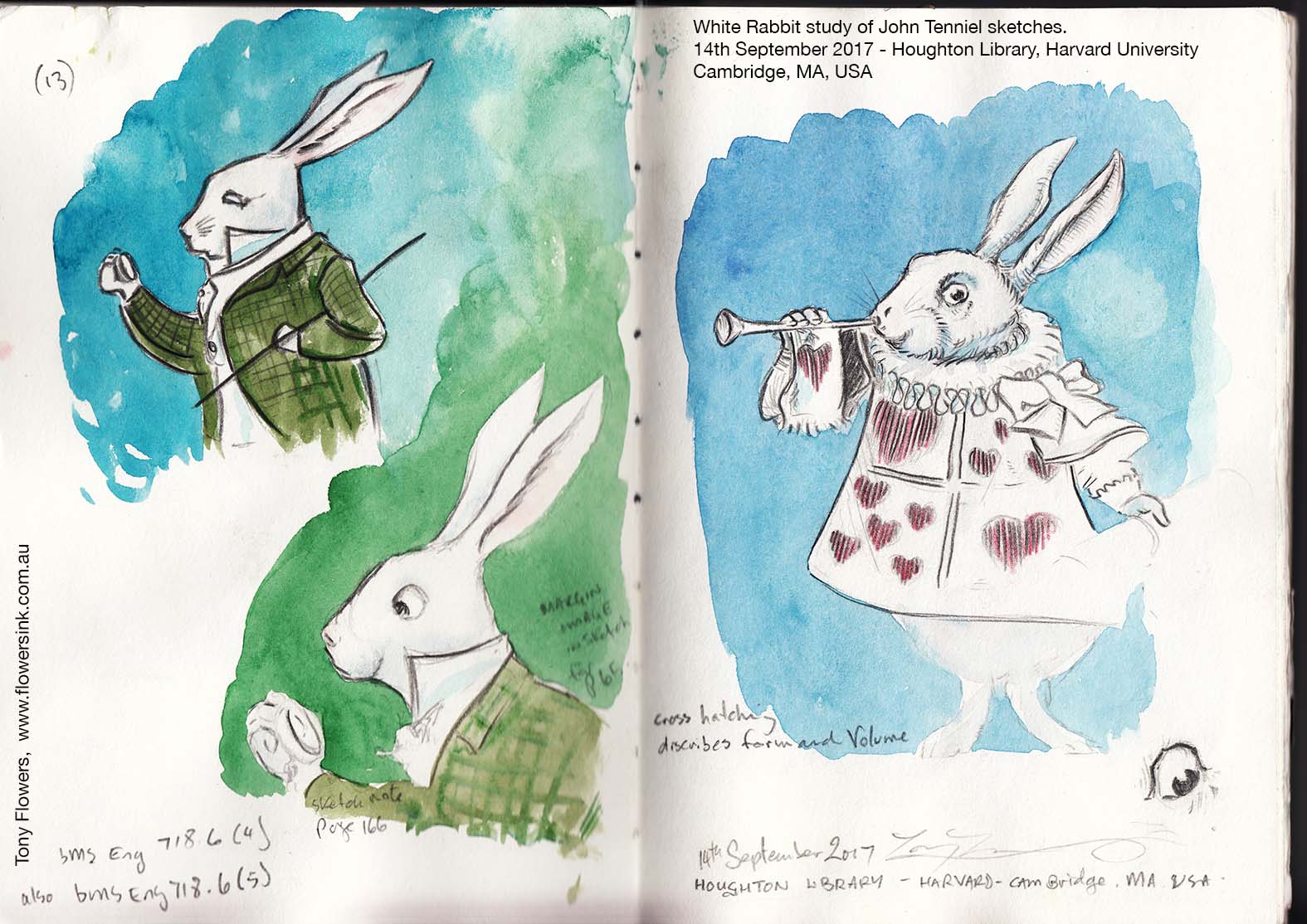
These images were sketched in the Houghton Library’s reading room and the colour was watercolour washed in later emphasising the character’s silhouette.
Lear has two predominant styles, the first is the simplistic line work used in his books of nonsense poems, such as his most famous work “The Owl and the Pussycat”. The second style is more of a realistic study of natural history subjects, such as the bird that he painted for John Gould (http://www.foliosociety.com/book/ELB/edward-lear-s-birds). Lear was also a prolific landscape artist, but I left these works outside of my terms of reference for this exploration.
Once I had started to develop an appreciation for their approach to drawing I then produced some sketches as an exercise to apply these approaches to my own work. I decided to create studies of my cats (Miffy and Cleopatra) and puppy (Freya). My beautiful German Shepherd (Thor) has so far missed out on this visual treatment.
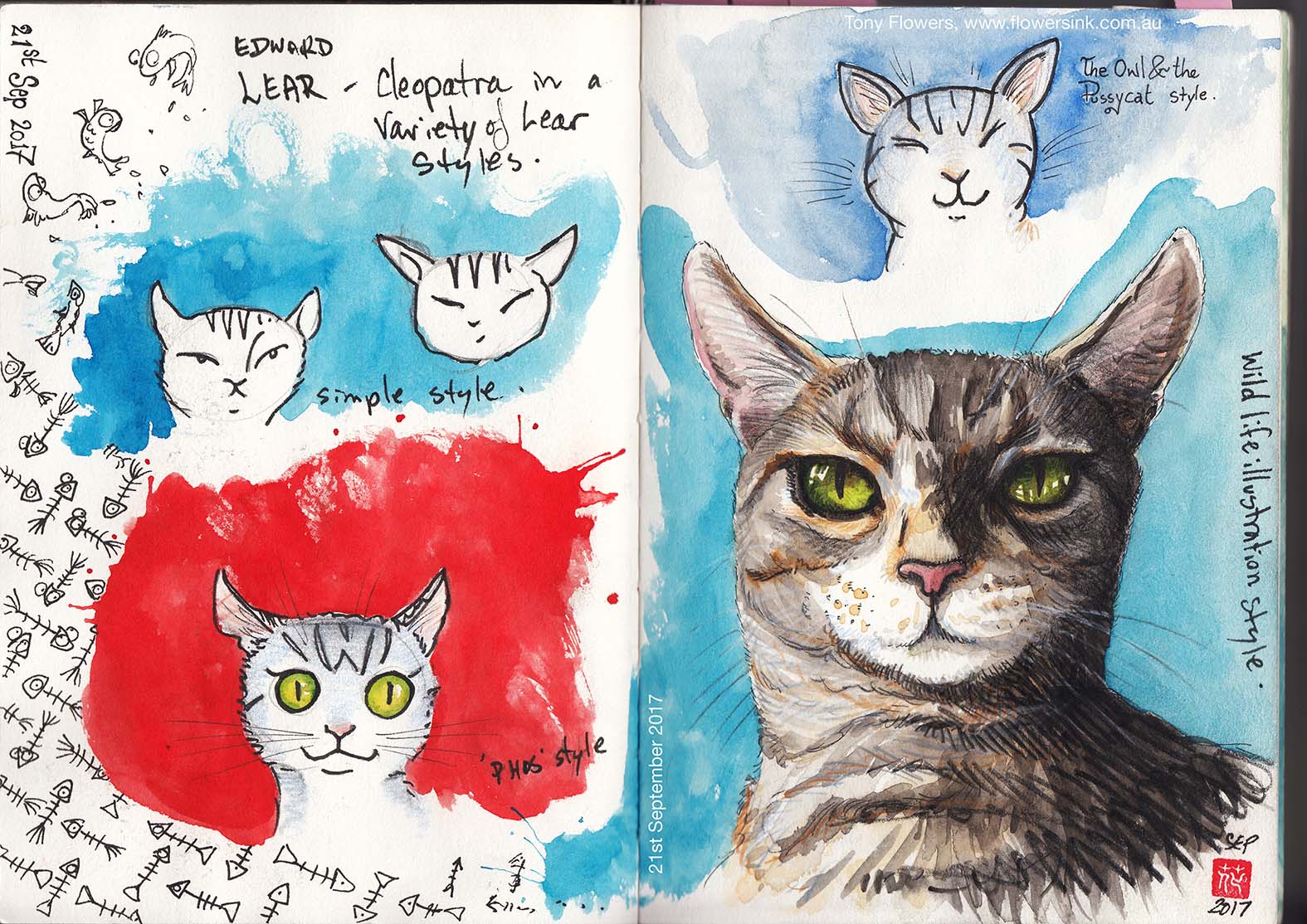
My first look at Cleopatra was done with my Edward Lear illustrators hat on looking at both his realistic and simplistic nonsense style, including a version of his ‘Phos’ drawing, which is an illustration of his own cat. Lear was such an avid cat lover and it is said that when Lear had a house built late in lif he had the floor plan exactly replicated from his last home as his cat ‘Phos’ was old and blind and he didn’t want his cat to feel lost.
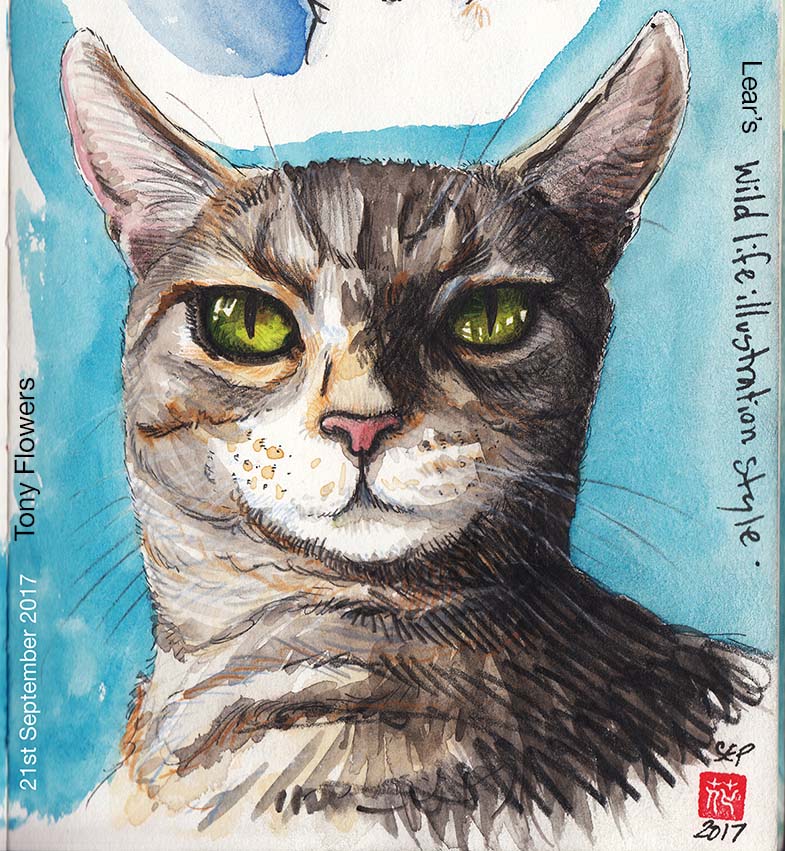
While my attempts at realism are a mere shallow version of anything done by Lear himself, I am just happy about working through the basics of the process for the purpose of the exercise.
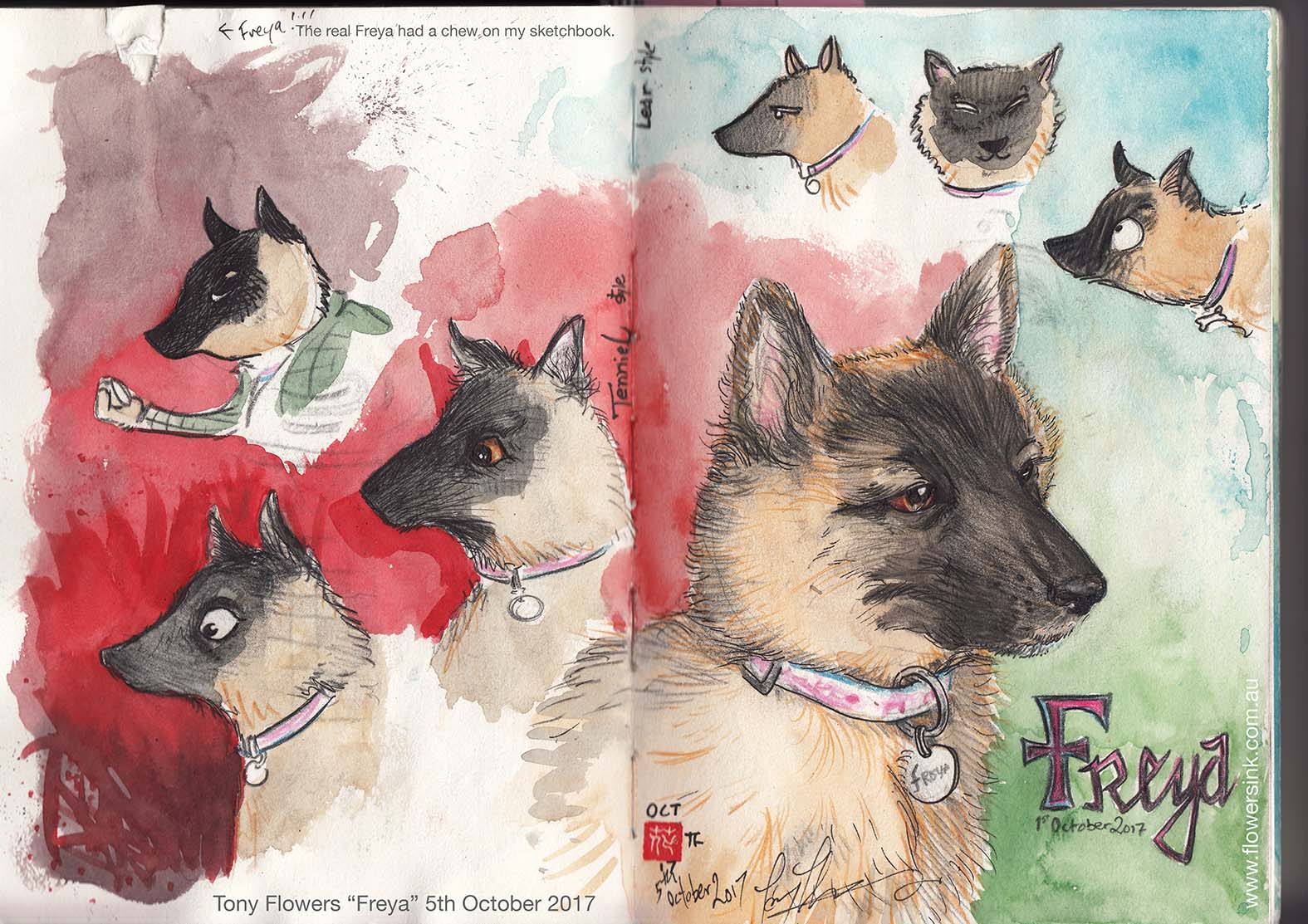
My next study looks at my young puppy Freya (a Belgium Shepherd) who was 9 weeks old at the time of the drawings. These were done primarily with my Tenniel hat on. Looking at how Tenniel’s drawings of the White rabbit could be adapted for Freya, I then looked at some of Lears drawing styles before finally drawing a sketch of my own character in my normal style (image on the far right).
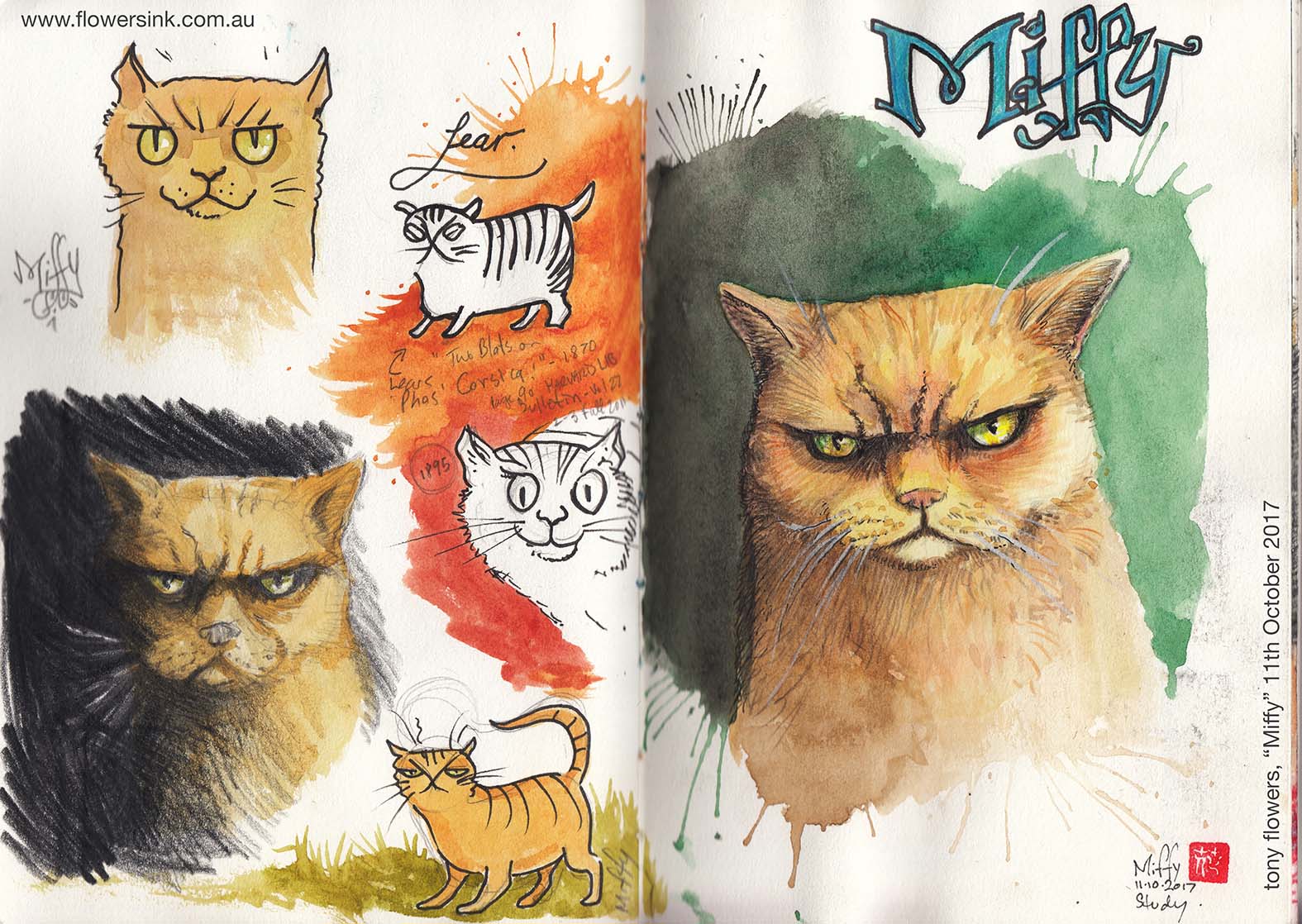
Next, I have tried to capture the picture book looks of my Myfanwy (aka Miffy). Most people think this threating looking cat is a work of pure imagination. She is not, she actually looks like this, and this is normal, even when she is purring. Miffy is a Britsh Shorthair. Interestingly enough, the rumoured cat breed that Tenniel based his Cheshire Cat on.

If you have read some of my older posts you will have seen some of my early illustrations of Miffy as a potenial book character.
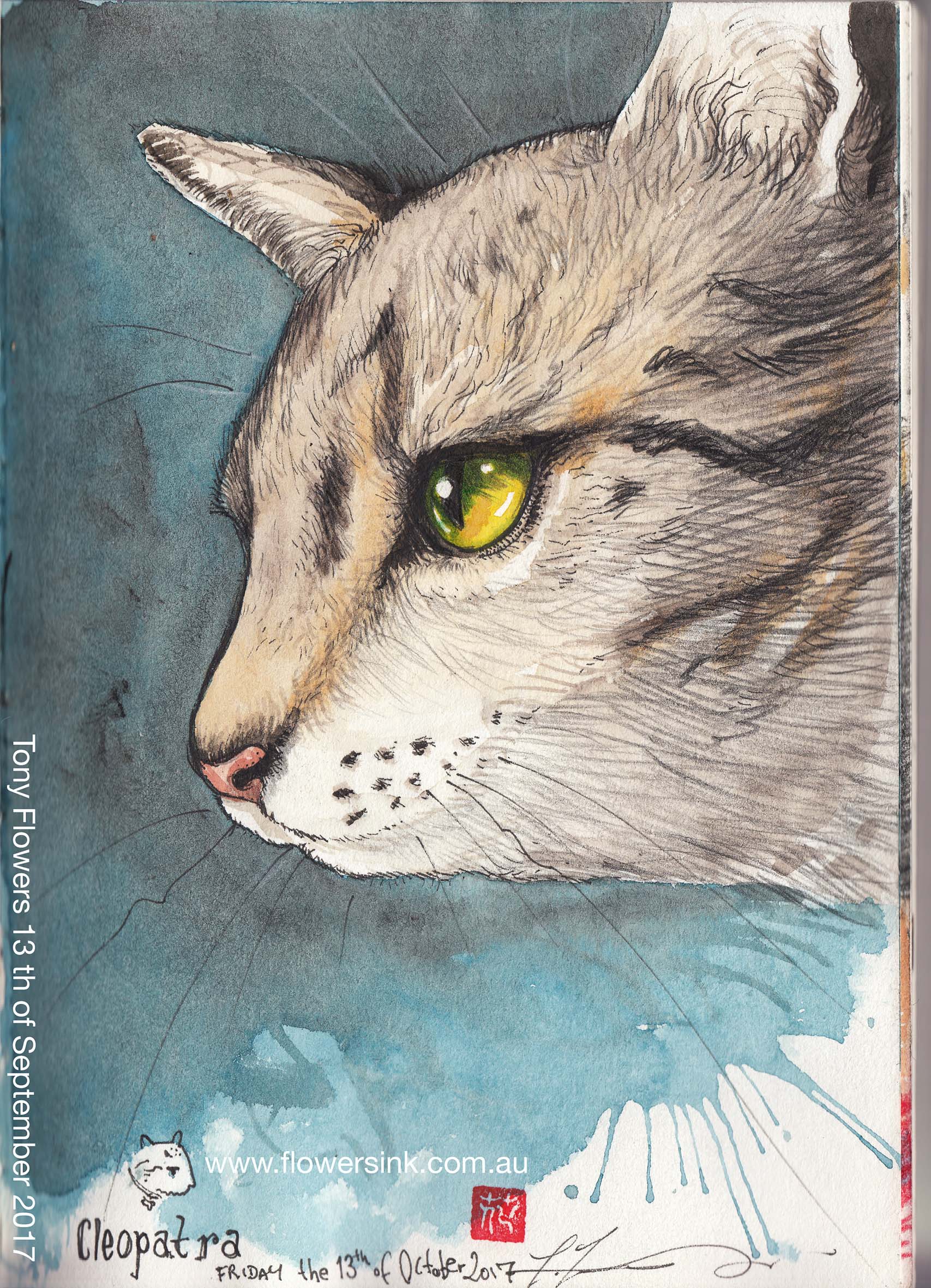
The next image, above, is a Cleopatra again. In this image, I am just looking at Lear’s approach to realism, overlaid with Tenniel’s cross-hatching to describe volume. Note the ink work around the eyes and nose.
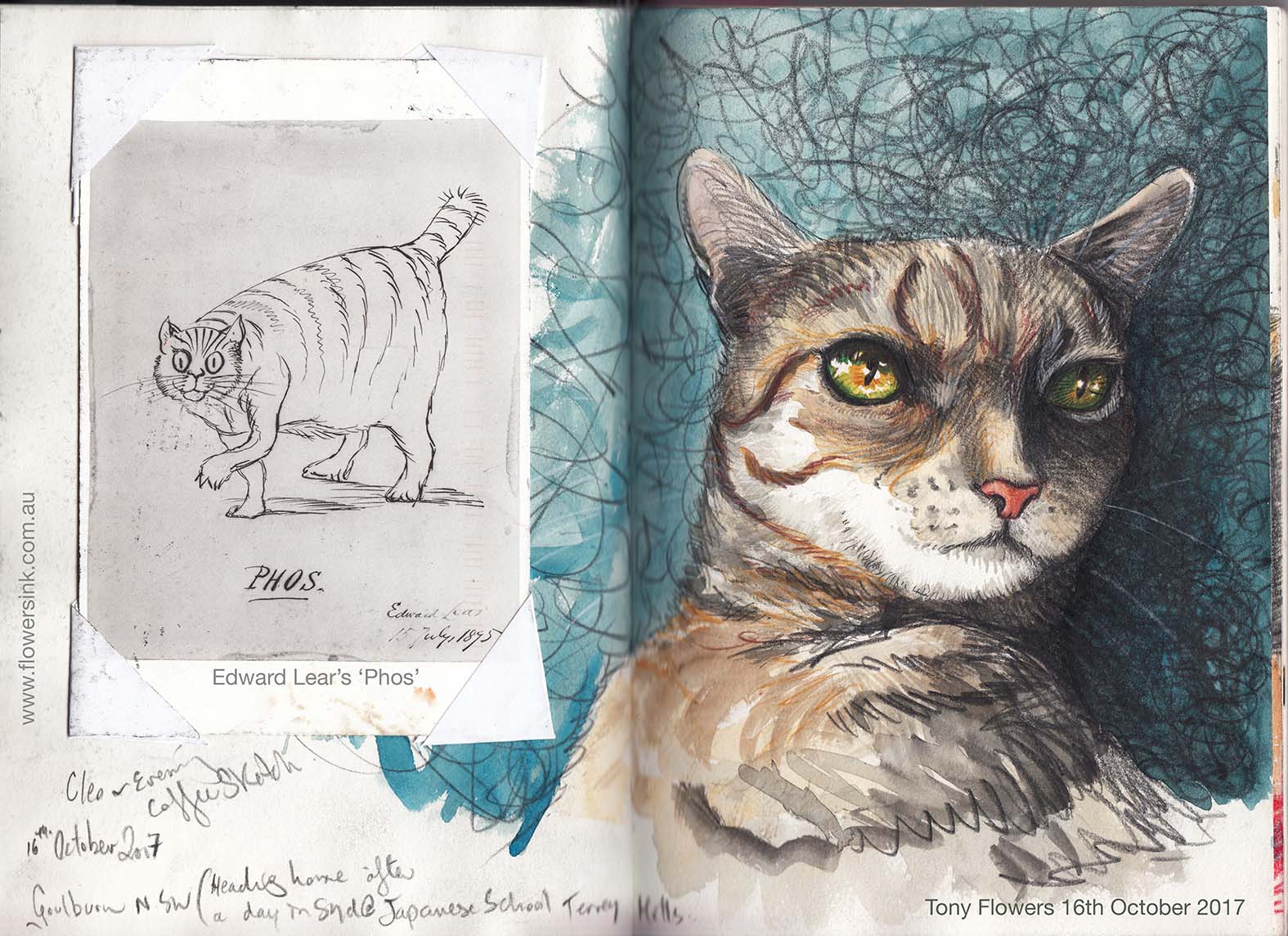
Above is another Cleopatra experiment. For anyone who is interested in mediums, these drawings are done with colour pencils, watercolour and ink. For pencils, I generally use a combination of Staedtler* Ergosoft and Faber-Castell Polychromos pencils. For watercolours I love AS, Art Spectrum watercolour tubes (http://artspectrum.com.au/product_type/watercolours/ ), their Australian Grey is the mid-perfect skin colour. I also use Windsor Newtons, both tube and block stock. And for ink, while I will occasionally bust out the old school nib and ink bottle, I generally use Staedtler pigment liners. (*Staedtler generously provide me with a large range of drawing pencils and pens)
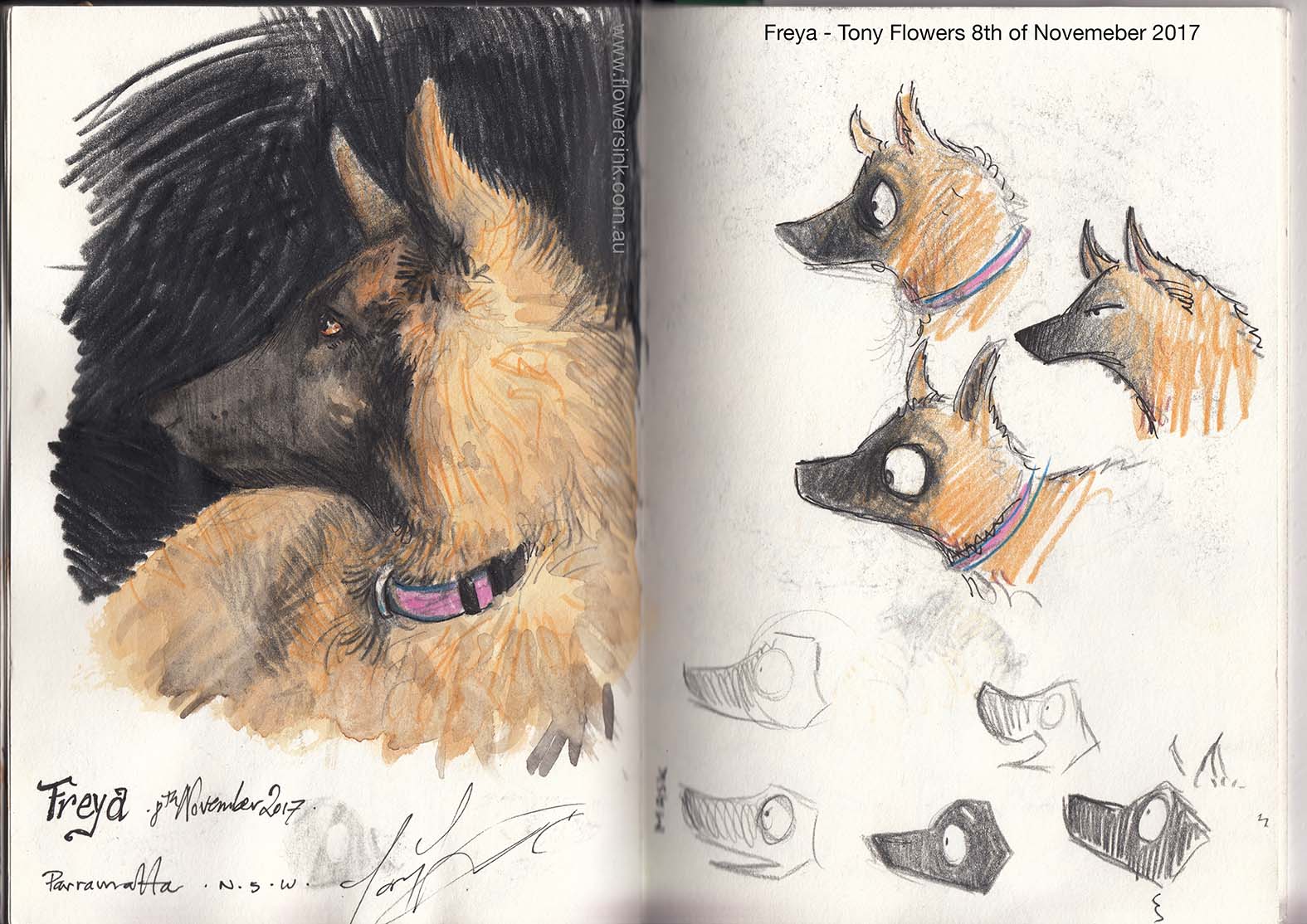
This Freya image (she is now almost 12 weeks old) is more of natural history study to examine her markings and fur patterns (fur directions). The right-hand page is then an experiment with a simple illustration style, more like my normal style of drawing.
This does raise the question Why would I do this? Well as an illustrator I am always trying to improve my skills and look at things though other people’s eyes. It also lets me refine my own style. By doing these exercises and allowing myself to be influenced by them I can see small changes to my own style that I like.
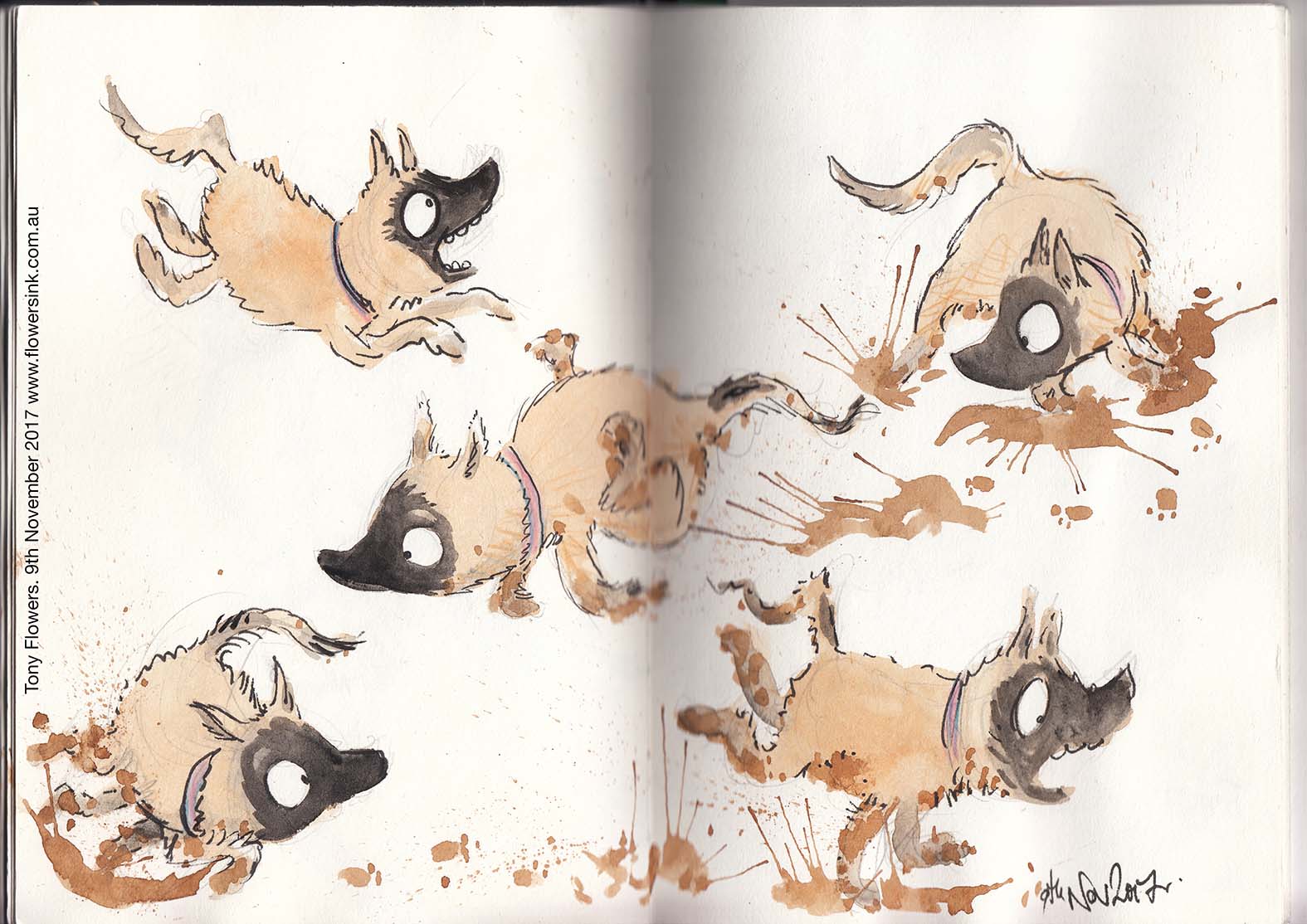
The final set drawings above are of Freya in my normal illustration style. While they do not resemble either the work of Tenniel or Lear I can see the influence of Tenniel in the shape and movement of her ears and the silhouette of her nose. I can see the simplicity of Lear’s lines in her outline, yet it feels as natural as my normal illustration work. This is probably due to the fact that while I am influenced by other illustrators, I am not a slave to replicating their work. Quite the opposite, after the initial study exercises, I don’t even think about technique when I draw. Rather, with the germ of an idea to draw Freya in my mind, I just let the pen find its own path across the paper. Through this dance between pen and paper, the marks left behind become Freya.
I should point out that while Tenniel and Lear were the main subjects that I focused on for these experiments, throughout the past few months I have also looked closely at the works of Arthur Rackham, Phil May, Charles Gir, the Aardman studios (exhibition at ACMI in Melbourne) and Dr Seuss.
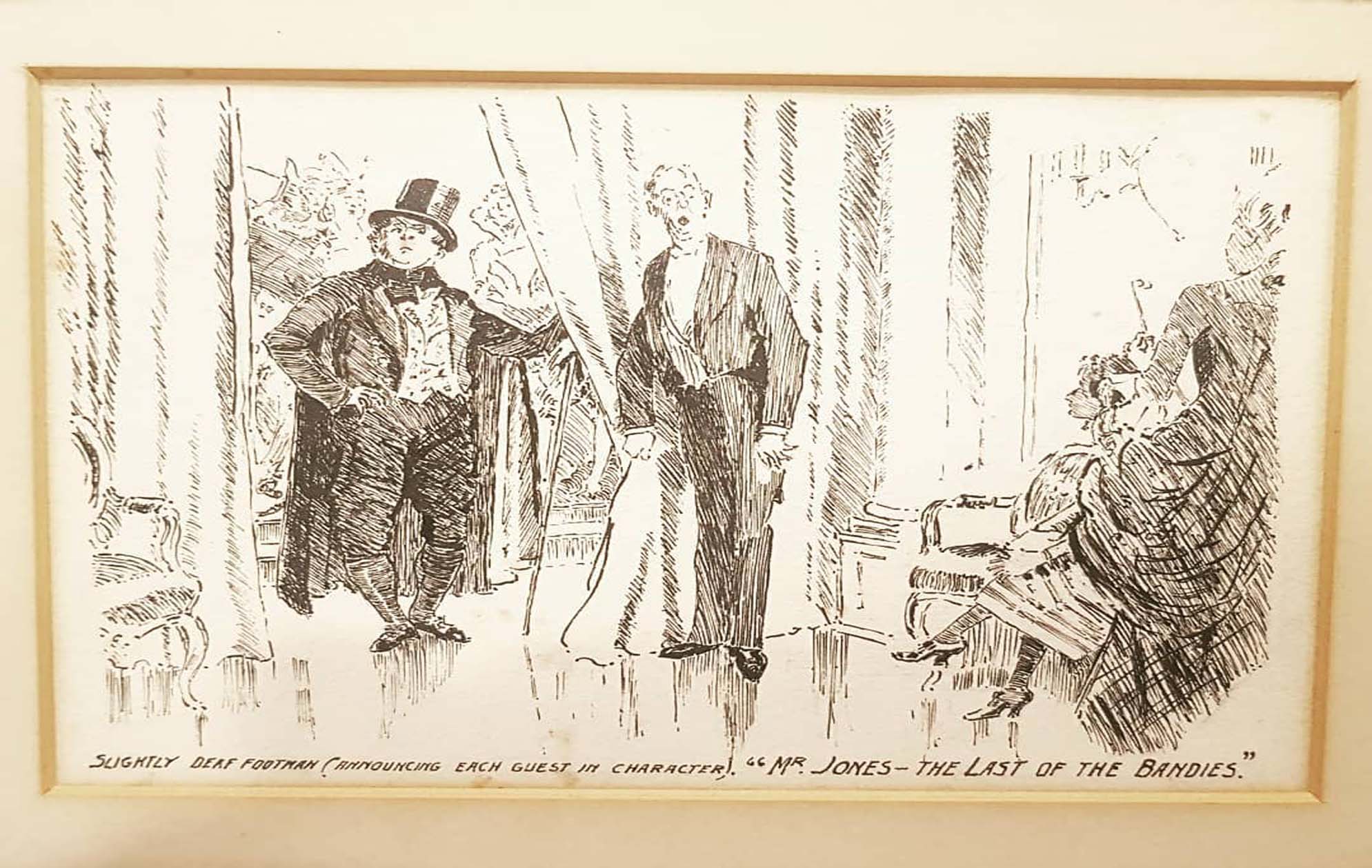 The slightly deaf footman (Reynolds, 1920)
The slightly deaf footman (Reynolds, 1920)

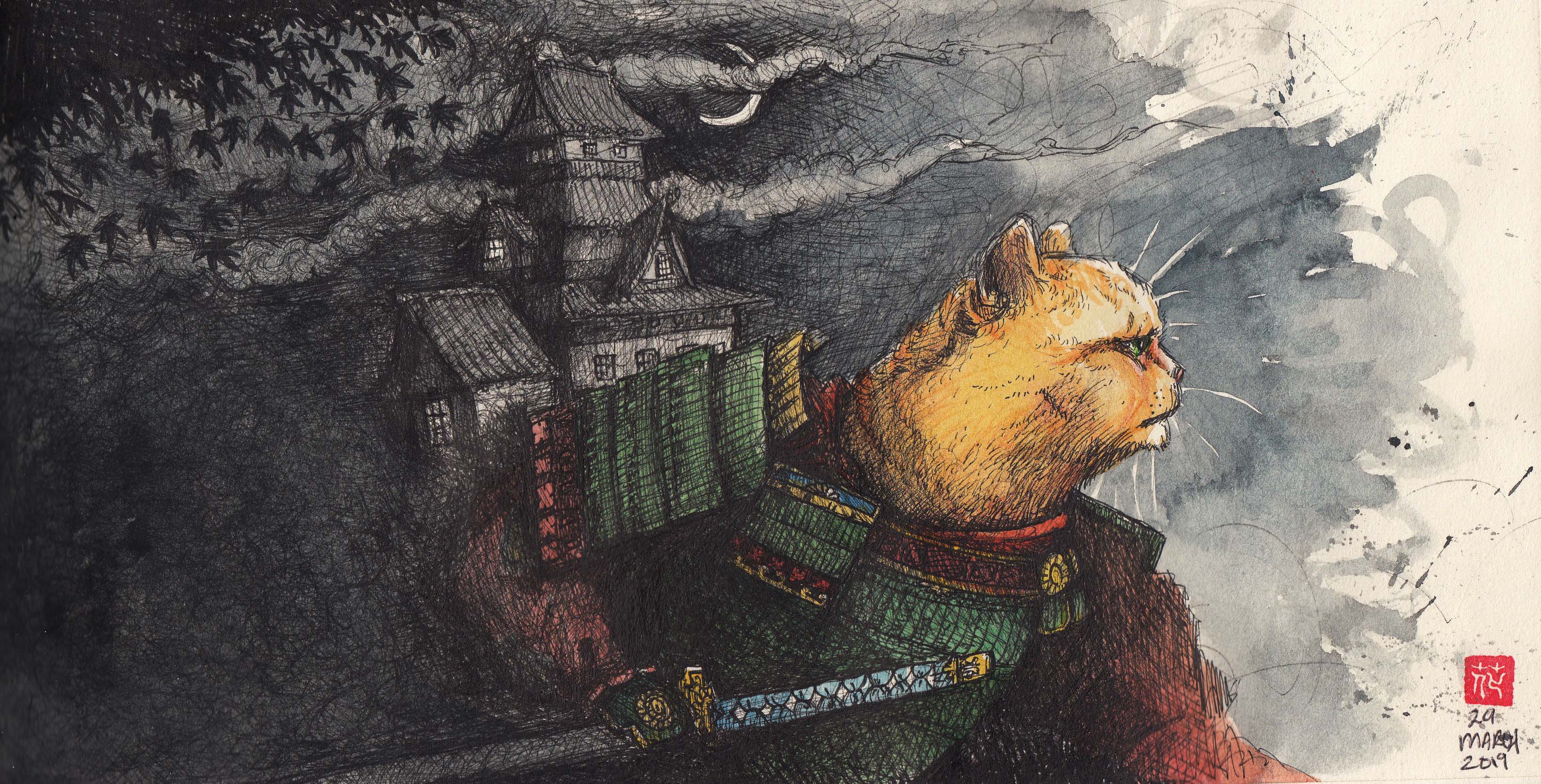 Miffy the Samurai (ink, watercolour and pencil on paper), 2019
Miffy the Samurai (ink, watercolour and pencil on paper), 2019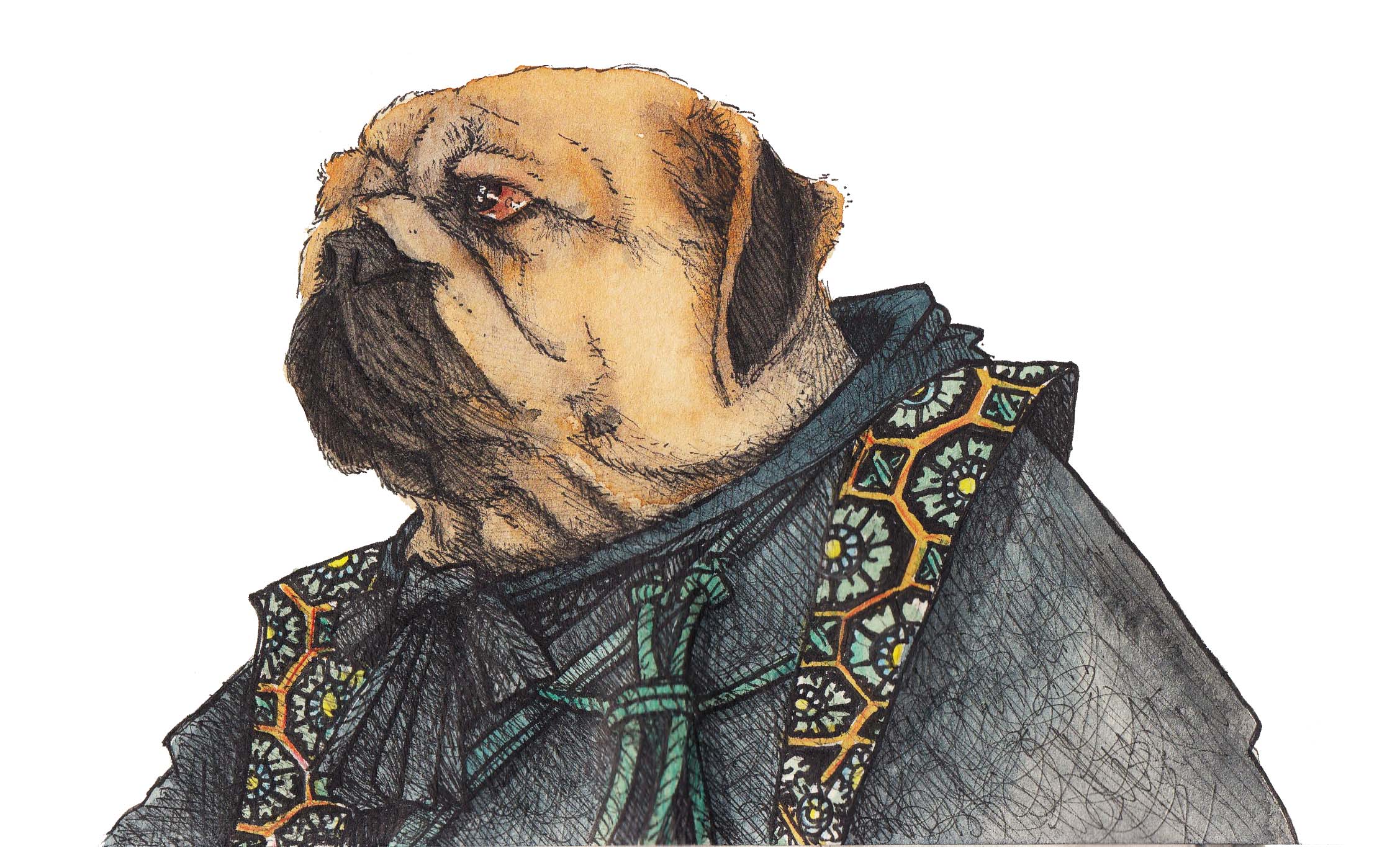 Shinobi Pug (ink, watercolour and pencil on paper), 2019
Shinobi Pug (ink, watercolour and pencil on paper), 2019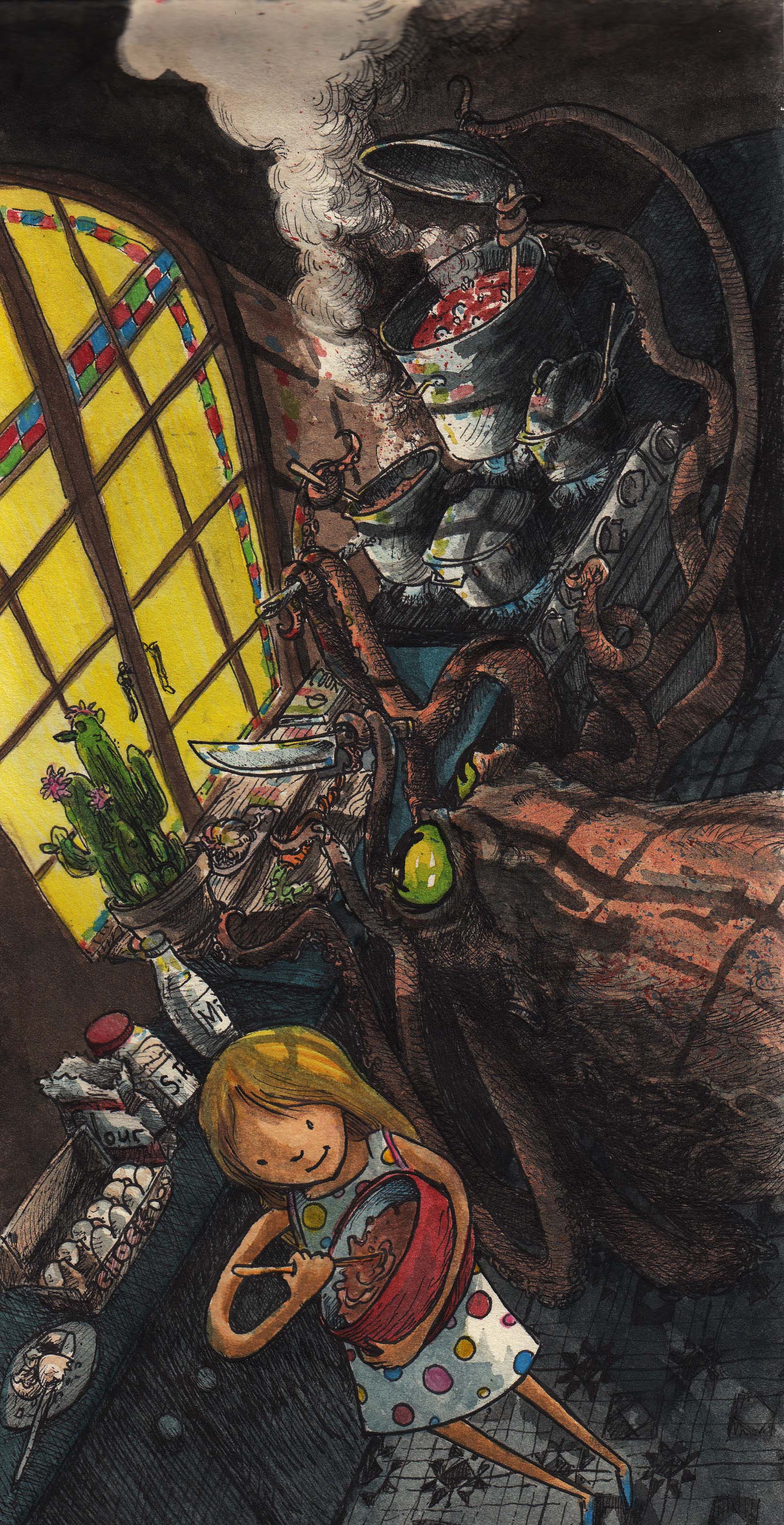 Cooking with an octopus (ink, watercolour and pencil on paper), 2019
Cooking with an octopus (ink, watercolour and pencil on paper), 2019